Spinach leaves
Spinach leaves are the green, leafy parts of the spinach plant (Spinacia oleracea). They are widely consumed as a nutritious vegetable and are known for their vibrant green color and distinct flavor. Spinach is a member of the Amaranthaceae family and is native to central and southwestern Asia.
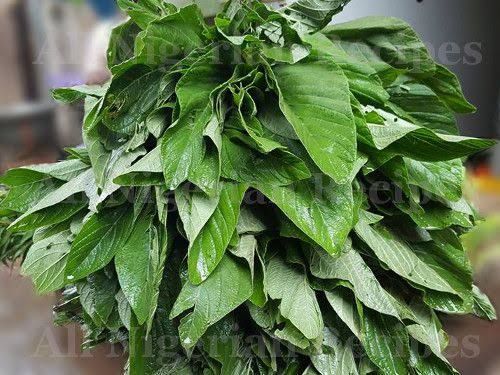
Spinach leaves are packed with various vitamins, minerals, and antioxidants, making them a highly nutritious food. They are particularly rich in vitamins A, C, and K, as well as folate, iron, and calcium. Spinach also contains several phytochemicals, such as lutein and zeaxanthin, which are beneficial for eye health.
Spinach leaves can be consumed raw or cooked and are a popular ingredient in salads, soups, stews, and various other dishes. They can be sautéed, steamed, or added to smoothies and juices. Spinach is versatile and pairs well with a wide range of ingredients, including cheese, nuts, fruits, and other vegetables.
It's worth noting that spinach leaves have a naturally occurring compound called oxalic acid, which can bind with calcium and iron and potentially reduce their absorption. However, the overall nutritional benefits of spinach outweigh this concern, and a balanced diet usually provides adequate amounts of calcium and iron.
Spinach leaves are a nutritious and versatile vegetable that can be enjoyed in numerous culinary preparations while providing a range of health benefits.
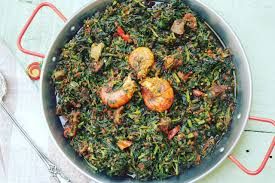
Uses in Africa
Spinach leaves have various uses in Africa, where they are grown and consumed in many regions. Here are some common uses of spinach leaves in African cuisine and traditional practices:
Culinary Use: Spinach leaves are widely used in African cooking and are featured in a variety of dishes. They can be cooked as a standalone vegetable, added to stews, soups, and sauces, or used as an ingredient in traditional dishes. Spinach is often cooked with onions, tomatoes, garlic, and spices to enhance its flavor.
Indigenous Dishes: In many African countries, spinach leaves are incorporated into traditional dishes. For example, in West Africa, spinach is a key ingredient in dishes like Egusi soup (made with ground melon seeds) and Efo Riro (a Nigerian vegetable stew). In East Africa, spinach is used in dishes such as Sukuma Wiki (a Kenyan collard greens dish) and Spinach and Peanut Stew.
Green Leafy Vegetables: Spinach leaves are a valuable source of nutrition, especially in regions where access to diverse vegetables is limited. In Africa, spinach is considered a green leafy vegetable and is often used as a nutritious addition to meals, providing essential vitamins, minerals, and dietary fiber.
Medicinal Purposes: In some African traditional medicine practices, spinach leaves are used for their potential medicinal properties. They may be included in herbal remedies or consumed as part of a balanced diet to support overall health. However, it's important to note that scientific evidence regarding specific medicinal uses of spinach leaves is limited, and consultation with healthcare professionals is advisable.
Nutritional Supplementation: Spinach leaves can be used to supplement the diet with essential nutrients, especially in areas where malnutrition is a concern. Spinach is a good source of vitamins, minerals, and antioxidants, making it a valuable addition to combat nutrient deficiencies.
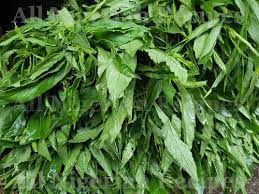
Specific uses of spinach leaves can vary across different African countries and cultures, as culinary traditions and practices differ. Nevertheless, spinach remains a popular and nutritious vegetable widely incorporated into African cuisine and dietary practices.
Most dominated region in West Africa
The most populated region in West Africa is the region known as the ECOWAS (Economic Community of West African States) subregion. This subregion consists of 15 countries: Benin, Burkina Faso, Cape Verde, Ivory Coast, Ghana, Guinea, Guinea-Bissau, Liberia, Mali, Niger, Nigeria, Senegal, Sierra Leone, Togo, and Gambia.
Among these countries, Nigeria stands out as the most populous country not only in West Africa but also in the entire African continent. With an estimated population of over 200 million people, Nigeria comprises a significant portion of the total population of the ECOWAS subregion.
Other countries in the ECOWAS subregion, such as Ghana, Ivory Coast, and Senegal, also have sizable populations and contribute significantly to the overall population of West Africa.
Population distribution can vary within countries, and certain urban areas or regions within West African countries may have higher population densities compared to others. However, in terms of the overall population within the West African region, Nigeria stands as the most populated country.
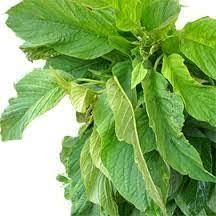
Spinach leaves in Nigeria
Spinach leaves, known as "Efo Tete" or simply "Spinach" in Nigeria, are widely consumed and cherished in Nigerian cuisine. They are a popular vegetable choice due to their availability, versatility, and nutritional benefits. Here are some key aspects of spinach leaves in Nigeria:
Culinary Use: Spinach leaves are a common ingredient in Nigerian dishes. They are used in various traditional soups, stews, and sauces, adding flavor, texture, and vibrant green color to the dishes. Spinach leaves are often sautéed with onions, tomatoes, peppers, and other spices to create a base for many Nigerian recipes.
Vegetable Soups: Spinach leaves are an essential component of several Nigerian vegetable soups. Efo Riro, a Yoruba vegetable soup, typically features spinach leaves as the main vegetable ingredient. The leaves are usually added to a mixture of assorted meats, fish, and spices, resulting in a rich and flavorful soup.
Side Dishes: Spinach leaves can also be prepared as a standalone side dish. They are often blanched or lightly steamed, seasoned with spices, and served alongside main courses such as rice, yam, or plantain. Some variations may incorporate additional ingredients like palm oil, crayfish, or smoked fish for added flavor.
Nutritional Benefits: Spinach leaves are highly valued in Nigerian cuisine for their nutritional content. They are a good source of vitamins A, C, and K, as well as iron, folate, and dietary fiber. In Nigeria, spinach leaves are recognized as a nutritious green leafy vegetable that contributes to a well-balanced diet.
Market Availability: Spinach leaves are widely available in Nigerian markets and can be purchased fresh, either loose or in bundles. They are typically sold in open-air markets and can be found year-round, making them easily accessible to consumers across the country.
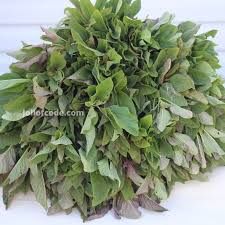
Cultivation: Spinach leaves can be grown in Nigeria, both on a small scale in home gardens and on a larger scale for commercial purposes. The crop thrives in Nigeria's tropical climate, and farmers cultivate spinach in various regions of the country.
Spinach leaves play an important role in Nigerian cuisine, adding flavor, color, and nutritional value to a wide range of dishes. They are enjoyed in both traditional recipes and contemporary interpretations, showcasing their versatility and popularity among Nigerians.
How's been prepared

Spinach leaves in Nigeria are prepared in various ways depending on the dish and personal preference. Here are a few common methods of preparing spinach leaves:
Sautéed: Spinach leaves are often sautéed with onions, tomatoes, peppers, and other spices. The process typically involves heating oil or palm oil in a pan, adding chopped onions and tomatoes, and allowing them to cook until softened. Then, the spinach leaves are added and cooked until wilted. This sautéed spinach can be served as a side dish or used as a base for soups and stews.
Steamed: Steaming spinach leaves is another popular method of preparation. The leaves are placed in a steamer or a pot with a small amount of water, covered, and cooked over medium heat until they become tender and wilted. Steamed spinach can be enjoyed as a standalone side dish or incorporated into other recipes.
Blanched: Blanching is a quick cooking method that involves briefly immersing the spinach leaves in boiling water and then transferring them to an ice bath to stop the cooking process. Blanching helps retain the vibrant green color of the leaves and preserves their texture. Blanching spinach is often done when it will be used in recipes like salads or as an ingredient in other dishes.
Added to Soups and Stews: Spinach leaves are frequently added to Nigerian soups and stews to enhance their flavor and nutritional content. Once the base of the soup or stew is prepared, such as with ingredients like meat, fish, or vegetables, the spinach leaves are added and allowed to cook until they wilt and become incorporated into the dish.
Raw in Salads: In some cases, spinach leaves are consumed raw in salads. They can be combined with other fresh vegetables, fruits, and toppings like nuts or cheese to create a refreshing and nutritious salad.
These are just a few examples of how spinach leaves are prepared in Nigeria. The specific cooking methods may vary depending on the recipe, regional preferences, and individual creativity in the kitchen.
States that farms it the most in Nigeria
Spinach is cultivated in various states across Nigeria, but some states are known for their significant production of spinach. The states that are recognized for farming spinach in larger quantities include:
Kano State: Kano State, located in northern Nigeria, is known for its agricultural productivity. It is one of the major spinach-producing states in the country. The favorable climate and availability of fertile land contribute to spinach cultivation in this region.
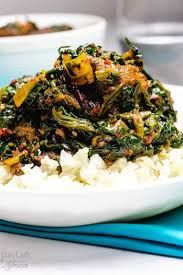
Kaduna State: Kaduna State, also situated in northern Nigeria, has a significant presence in spinach farming. The state's agricultural sector plays a vital role in its economy, and spinach is one of the crops cultivated there.
Ogun State: Ogun State, located in the southwestern part of Nigeria, is renowned for its agricultural activities. The state's favorable climate and suitable soil conditions make it conducive for spinach cultivation, among other crops.
Edo State: Edo State, located in the southern part of Nigeria, is another region where spinach farming is prominent. The state's agricultural sector is diverse, and spinach is one of the leafy greens cultivated in this region.
Oyo State: Oyo State, situated in southwestern Nigeria, is known for its agricultural productivity. Spinach is grown in this state, along with other crops, to meet the demand for fresh vegetables in the region.
Spinach cultivation is not limited to these states, and it occurs in various other parts of Nigeria as well. The suitability of the climate, availability of fertile land, and the demand for spinach contribute to its cultivation in different states across the country.
Can be eaten with what in Nigeria?
Spinach in Nigeria can be eaten with a wide range of foods and incorporated into various dishes. Here are some common ways spinach is enjoyed and paired with other ingredients in Nigerian cuisine:
Soups and Stews: Spinach is a popular addition to Nigerian soups and stews, where it provides both flavor and nutrition. It is often combined with other vegetables, meat, fish, or seafood. Some well-known Nigerian soups that include spinach are Egusi Soup, Efo Riro, Edikaikong Soup, and Oha Soup.
Rice Dishes: Spinach can be incorporated into rice dishes to add color, texture, and nutritional value. It can be mixed with cooked rice or used as a topping for rice-based meals such as Jollof Rice, Fried Rice, or Coconut Rice.

Nigerian Sauces: Spinach can be cooked into sauces that are served alongside staple foods like yam, plantain, or boiled potatoes. The spinach sauce is usually seasoned with spices, onions, and peppers, and can be paired with a variety of carbohydrates.
Vegetable Stir-fries: Spinach is often used in vegetable stir-fries in Nigerian cuisine. It can be sautéed with other vegetables like bell peppers, onions, carrots, and mushrooms, and seasoned with spices or sauces to create a tasty and nutritious side dish.
Pounded Yam and Fufu: Spinach can be enjoyed with traditional Nigerian staples like pounded yam or fufu. It can be served alongside these starchy foods as a nutritious and flavorful accompaniment.
Omelettes and Egg Dishes: Spinach can be added to omelettes and other egg dishes for a nutritious and delicious meal. It can be sautéed with onions, tomatoes, and spices before adding beaten eggs for a flavorful and satisfying breakfast or brunch option.
These are just a few examples of how spinach can be eaten and paired with other ingredients in Nigerian cuisine. Spinach's versatility allows it to be incorporated into a wide range of dishes, adding nutritional value and flavor to traditional and modern recipes alike.
Common soup prepared with spinach leaves in Nigeria

One of the most common Nigerian soups that incorporate spinach leaves is Efo Riro. Efo Riro is a traditional Yoruba vegetable soup that is rich, flavorful, and often enjoyed with various starchy accompaniments. Here is a basic recipe for Efo Riro:
Ingredients:
- Spinach leaves (Efo Tete), washed and chopped
- Assorted meats (such as beef, chicken, or goat meat), cooked and diced
- Assorted fish (such as smoked fish or dried fish), deboned and flaked
- Palm oil
- Onions, finely chopped
Tomatoes, chopped - Bell peppers (red or green), chopped
- Scotch bonnet peppers (or any preferred hot pepper), finely chopped (adjust to your desired spice level)
- Stock or water
- Seasoning cubes or powder
Salt - Locust beans (Iru or Ogiri), optional (for added flavor)
Instructions:
- Heat palm oil in a pot over medium heat, add the chopped onions, and sauté until golden brown.
- Add the chopped tomatoes, bell peppers, and scotch bonnet peppers to the pot. Cook until the vegetables are softened and the oil begins to separate.
- Add the assorted meats and fish to the pot and stir to combine with the vegetable mixture.
- Pour in the stock or water, enough to cover the ingredients, and add the seasoning cubes or powder and salt to taste. If using locust beans, add it now.
- Cover the pot and let the soup simmer on medium-low heat for about 10-15 minutes to allow the flavors to meld together.
- Add the chopped spinach leaves to the pot and stir well. The leaves will wilt and cook down quickly.
- Allow the soup to simmer for an additional 5-10 minutes, ensuring the spinach is cooked but still vibrant green.
- Taste and adjust the seasoning if needed.
- Remove from heat and serve the Efo Riro with your choice of accompaniments such as pounded yam, eba, amala, or rice.
Efo Riro can be customized by adding other vegetables or ingredients according to personal preference. Some variations may include the addition of locust beans, crayfish, or other spices to enhance the flavor profile.
##Nutrients from the leaves
Spinach leaves are highly nutritious and offer several essential vitamins, minerals, and antioxidants. Here are some key nutrients found in spinach leaves:

Vitamin A: Spinach leaves are rich in vitamin A, particularly in the form of beta-carotene, which is a precursor to vitamin A. Vitamin A is important for healthy vision, immune function, and cell growth.
Vitamin C: Spinach leaves are a good source of vitamin C, which is an antioxidant that helps protect cells from damage, supports immune function, and aids in the absorption of iron.
Vitamin K: Spinach leaves are high in vitamin K, which plays a crucial role in blood clotting and bone health.
Folate: Spinach leaves contain folate, also known as vitamin B9, which is essential for DNA synthesis, red blood cell production, and proper fetal development during pregnancy.
Iron: Spinach leaves provide a moderate amount of iron, an essential mineral that is important for oxygen transport, energy production, and overall vitality.
Calcium: Spinach leaves contain calcium, which is essential for healthy bones, teeth, and muscle function.
Potassium: Spinach leaves are a good source of potassium, an electrolyte that helps regulate blood pressure, balance fluids in the body, and support heart health.
Dietary Fiber: Spinach leaves are high in dietary fiber, which aids in digestion, promotes feelings of fullness, and helps maintain healthy blood sugar levels.
Additionally, spinach leaves contain various antioxidants, such as lutein and zeaxanthin, which are beneficial for eye health and may help protect against age-related macular degeneration.
The nutrient content of spinach leaves can vary depending on factors such as the variety, growing conditions, and preparation methods. However, spinach is widely recognized as a nutrient-dense leafy green vegetable that offers a range of health-promoting compounds.
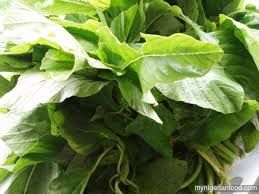
Why do Nigerians values it?
Nigerians value spinach for several reasons, which contribute to its popularity and importance in Nigerian cuisine. Here are some reasons why spinach is highly valued in Nigeria:
Nutritional Benefits: Spinach is recognized as a highly nutritious vegetable that is rich in vitamins, minerals, and antioxidants. Nigerians value spinach for its nutritional content, as it provides essential vitamins like vitamin A, vitamin C, and vitamin K, along with minerals like iron and calcium. Consuming spinach is seen as a way to incorporate vital nutrients into the diet, supporting overall health and well-being.
Versatility: Spinach is a versatile vegetable that can be used in various dishes and preparations. It can be added to soups, stews, sauces, rice dishes, and even consumed raw in salads. Its mild flavor and tender leaves make it adaptable to different cooking styles and combinations with other ingredients. This versatility allows Nigerians to enjoy spinach in a variety of ways, enhancing the taste, texture, and nutritional value of their meals.
Culinary Tradition: Spinach has a long-standing presence in Nigerian culinary traditions. It is an integral part of several indigenous recipes and plays a significant role in regional dishes. For example, Efo Riro, a popular Yoruba vegetable soup, prominently features spinach as the primary vegetable ingredient. This cultural significance and heritage contribute to the value placed on spinach in Nigerian cuisine.
Availability and Affordability: Spinach is readily available in Nigeria and is relatively affordable compared to some other vegetables. It can be found in local markets throughout the country, making it easily accessible to a wide range of consumers. The accessibility and affordability of spinach contribute to its popularity and widespread usage in Nigerian households.
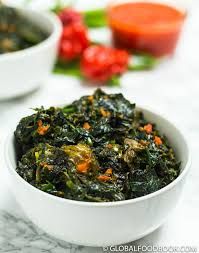
Taste and Texture: Spinach has a pleasant taste and a tender, yet slightly crunchy texture when cooked properly. It adds a unique flavor and vibrant green color to dishes, enhancing their overall appeal. Nigerians appreciate the taste and texture that spinach brings to their meals, making it a favored choice in many recipes.
Health Consciousness: There is an increasing emphasis on health and nutrition in Nigeria, and spinach aligns with these health-conscious values. As individuals and families become more aware of the importance of eating nutrient-rich foods, spinach stands out as a leafy green vegetable that offers numerous health benefits. Its inclusion in meals reflects a commitment to a balanced and nourishing diet.
Nigerians value spinach for its nutritional benefits, versatility, culinary tradition, availability, taste, texture, and alignment with health-conscious lifestyles. These factors combine to make spinach a highly valued and widely enjoyed vegetable in Nigerian cuisine.
Conclusion
In conclusion, spinach leaves hold significant value in Nigeria due to their nutritional benefits, versatility in cooking, cultural traditions, availability, taste, texture, and alignment with health-conscious lifestyles. Nigerians appreciate the rich nutrient content of spinach, including vitamins A, C, and K, as well as minerals like iron and calcium.
The versatility of spinach allows it to be incorporated into a wide range of dishes, from soups and stews to rice dishes and salads. Its presence in traditional recipes, such as Efo Riro, showcases its cultural significance in Nigerian cuisine. The widespread availability and affordability of spinach make it easily accessible to consumers across the country. The pleasant taste and tender texture of cooked spinach enhance the overall appeal of meals.

Additionally, as health consciousness grows in Nigeria, spinach's reputation as a nutritious leafy green vegetable aligns with the values of individuals and families striving for a balanced and nourishing diet. Therefore, spinach holds a special place in Nigerian cuisine, valued for its nutritional value, culinary versatility, and cultural significance.
Congratulations, your post has been upvoted by @dsc-r2cornell, which is the curating account for @R2cornell's Discord Community.
Efo Soko to the world! ❤️😍